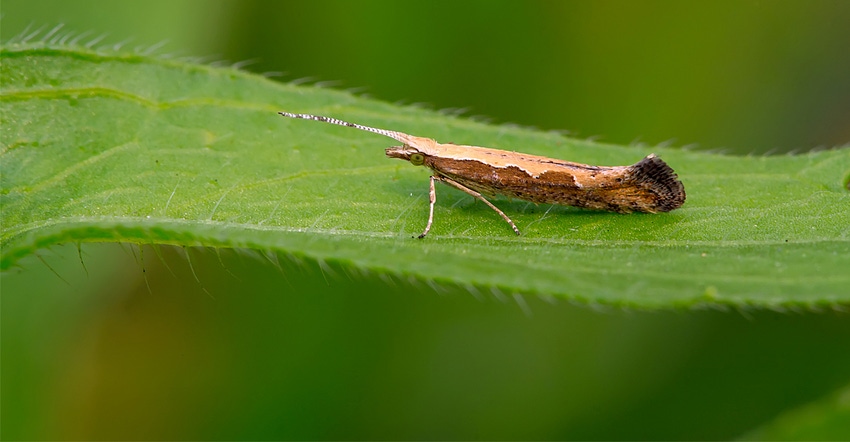
Release of genetically engineered diamondback moths into cabbage plots in upstate New York got a green light from USDA’s Animal and Plant Health Inspection Service. The state’s Department of Environmental Conservation still needs to approve the experiment before it can start.
But food safety activists and the Northeast Organic Farmers Association of New York oppose that approval, citing concerns over the public health impact of moths employing “female lethality” technology. The proposed Cornell University experiment would be the first open-air trial of this novel organism.
NOFA-NY Executive Director Andrianna Natsoulass argues that USDA’s Environmental Assessment details few health implications of the dead larvae — containing the GE gene — on farmworkers, consumers and surrounding wildlife. Without adequate review, NOFA-NY strongly believes that the proposed experiments may pose unnecessary risks, and calls for the application to be denied.
The genetically modified diamondback moth causes females to die. Males continue to reproduce with their wild counterparts until the moths are under control.
After releasing its final environmental assessment and finding no significant impact, APHIS argues an environmental impact statement isn’t necessary. The reasoning is this: Because GE DBM isn’t used for food or feed purposes and doesn’t contain any GE plant-incorporated protectants with insecticidal properties or GE traits that convey herbicide resistance, neither Food and Drug Administration nor Environmental Protection Agency regulatory actions are required.
Genetically engineered insects
DBMs, also known as cabbage moths, feed on crucifer crops such as cabbage, broccoli and cauliflower. Researchers say the engineered insects could be a pesticide-free tool in fighting crop damage
Oxitec, a United Kingdom biotech company, designed the DBMs with a “self-limiting gene.” When the males mate with females, the gene is passed on to the offspring. The gene makes female offspring die before they reach adulthood so they can’t reproduce. The insects die out so the released insects and their genes don’t persist in the environment.
The idea is to shrink the population of moths in the area where the insects are released without using pesticides. The moths are also engineered to have a fluorescent protein marker that is used to track and monitor them.
Oxitec used the same technology to create male Aedes aegypti mosquitoes, developed to prevent the spread of mosquito-borne diseases like Zika and yellow fever. Last year, federal regulators approved the open-air release of Oxitec’s genetically modified mosquitoes. But that release was delayed.
Even so, the company released the engineered mosquitoes in parts of Brazil, Grand Cayman and Panama. Oxitec officials contend the releases successfully led to declines in Aedes aegypti mosquito populations in those areas.
USDA and research perspectives
Cage and greenhouse studies at Cornell found the engineered moths to be effective at reducing DBM populations. Cornell entomologist Anthony Shelton contends the field trial is needed to get additional information on how these insects could be used for pest management in the future.
As proposed, Shelton and his team would release the GE moths in a 10-acre research field at Geneva, N.Y. The federal permit allows releasing up to 30,000 moths per week, over three to four months.
Sheldon says prevailing wind patterns near Geneva when releases of GE DBMs are most likely to occur would prevent DBM movement into regions where they may successfully overwinter. As a safety measure, APHIS would require about a 500-foot boundary zone in which DBM host plants could not be planted.
However, NOFA-NY points out that windblown DBMs migrate many miles from where they emerge. That’s why the group disputes the claim that male GDM won’t spread far from the trial site.
Jaydee Hanson, senior policy analyst at the Washington, D.C.-based Center for Food Safety, says the consumer advocacy organization is also concerned that the use of the GE moths won’t reduce pesticide use. Other insects also eat these vegetables. “If you will still have to spray the same chemicals to kill other pests, where’s the advantage in this?” Hanson says.
There are also other issues: Will export markets, for instance, require the crucifer crops to be labeled as GE? And a bigger question is: Could breeding and release of large numbers lead to a resistance to the female lethality trait? Without a full environmental review, NOFA-NY and the Center for Food Safety believe the plug should be pulled on this experiment.
About the Author(s)
You May Also Like




